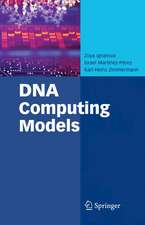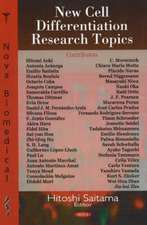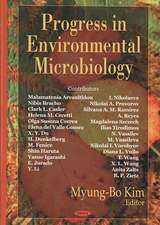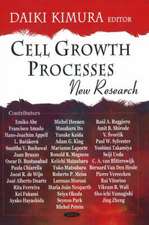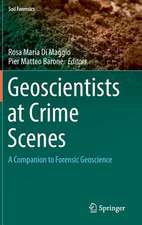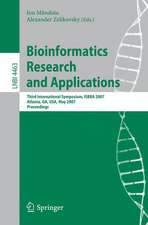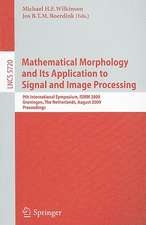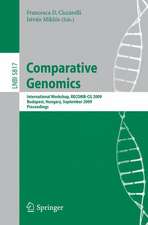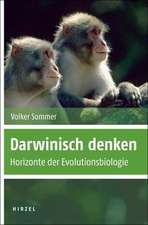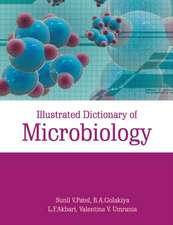Multidisciplinary Approaches to Forensic Archaeology: Topics discussed during the European Meetings on Forensic Archaeology (EMFA): Soil Forensics
Editat de Pier Matteo Barone, W. J. Mike Groenen Limba Engleză Hardback – 3 noi 2018
This book shows forensic archaeology as practiced in this legal context, emerging and solidifying in many European countries, differing in some respects because of differences in legal systems but ultimately sharing common grounds. Differently from similar books, this will be not only a collection of research and case studies in which forensic practitioners demonstrate the extent and complexity of the various aspects of forensic archaeology, but also it will show the necessity of co-operation as a condition for any work in forensic archaeology among scientists of different disciplines and law enforcers.
| Toate formatele și edițiile | Preț | Express |
|---|---|---|
| Paperback (1) | 884.27 lei 38-45 zile | |
| Springer International Publishing – 5 ian 2019 | 884.27 lei 38-45 zile | |
| Hardback (1) | 1115.46 lei 3-5 săpt. | |
| Springer International Publishing – 3 noi 2018 | 1115.46 lei 3-5 săpt. |
Preț: 1115.46 lei
Preț vechi: 1360.32 lei
-18% Nou
Puncte Express: 1673
Preț estimativ în valută:
213.44€ • 222.85$ • 176.65£
213.44€ • 222.85$ • 176.65£
Carte disponibilă
Livrare economică 14-28 martie
Preluare comenzi: 021 569.72.76
Specificații
ISBN-13: 9783319943961
ISBN-10: 3319943960
Pagini: 276
Ilustrații: XII, 279 p. 104 illus., 73 illus. in color.
Dimensiuni: 155 x 235 mm
Greutate: 0.64 kg
Ediția:1st ed. 2018
Editura: Springer International Publishing
Colecția Springer
Seria Soil Forensics
Locul publicării:Cham, Switzerland
ISBN-10: 3319943960
Pagini: 276
Ilustrații: XII, 279 p. 104 illus., 73 illus. in color.
Dimensiuni: 155 x 235 mm
Greutate: 0.64 kg
Ediția:1st ed. 2018
Editura: Springer International Publishing
Colecția Springer
Seria Soil Forensics
Locul publicării:Cham, Switzerland
Cuprins
Preface.- Chapter 01: Introduction: Forensic Archaeology: Combining Archaeology with Criminalistics and Criminology.- Part I: Forensic Archaeology and NDTs.- Chapter 02: Forensic archaeological remote sensing and geospatial analysis.- Chapter 03: Geophysics and Archaeology at crime scenes.- Chapter 04: Forensic Geophysics and the Search of Building Interiors, Peat Bogs, and Freshwater.- Part II: Forensic Archaeology and Human Remains.- Chapter 05: The increasing role of the forensic anthropologist in the search for the missing.- Chapter 06: Forensic archaeology: State-of-the-art archeological technology in France and other latest developments. A case study in Toulouse region (South West of France).- Chapter 07: Actualistic experimental taphonomy of inhumation burial.- Chapter 08: The use of 3-dimensional scanning and surface capture methods in recording forensic taphonomic traces: issues of technology, visualisation, and validation.- Chapter 09: Human remains in marineenvironments: Challenges and Future developments.- Chapter 10: Interrogating the ground – an archaeologist at a crime scene.- Chapter 11: Forensic Archaeology in Denmark – A Work in Progress.- Chapter 12: Recent recruitment of forensic anthropologist and odontologist in Carabinieri scientific investigation: multi-disciplinary approach and scene investigation in case of hidden corpse.- Chapter 13: Forensic Archaeology in Russia: Past Developments and Future Approaches.- Chapter 14: Operation Nobility: The identification of a missing soldier from the Battle of Arnhem, 1944.- Chapter 15: The Independent Commission for the Location of Victims’ Remains in Ireland: A case study – the abduction, murder and secret burial of Victim B.- Part III: Forensic Archaeology and Antiquity Crimes.- Chapter 16: Not just body and decomposition: Forensic Archaeology preventing Antiquities Crimes.- Chapter 17: Problems of Archaeological Heritage Protection—The Background of Crime Against Monuments and Works of Art.- Chapter 18; Preventing Art and Antiquities Crimes using Forensic Geology.
Notă biografică
PIER MATTEO BARONE: Pier Matteo Barone is an adjunct professor at the American University of Rome teaching courses on archaeological methodology, geophysical techniques (GPR, in particular) and forensic archaeology, as well as courses on the archaeology and heritage of Rome and the eastern Mediterranean.
His research is centered on different remote sensing applications to better understand the archaeological landscape. He is also a recognized expert in forensic archaeology employed to testify in criminal and civil cases. He was a co-investigator in a three-year research project (FIRB 2012) with the geological institute of CNR (IGAG) investigating marble quarries of the Greco-Roman world in Turkey.
Finally, he has authored over a hundred of publications on these topics, he has presented several papers in national and international conferences, he has appeared on national public/private radio, TV, and magazines, and heis co-editor and reviewer of several international peer-reviewed journals.
WJ MIKE GROEN: Mike Groen is a forensic archaeologist employed by the Netherlands Forensic Institute (NFI) and a staff member at the Leiden University, Faculty of Archaeology. His past academic and professional experience relates to GIS modelling, field archaeology, human taphonomy and physical anthropology. He is responsible for the introduction of forensic archaeology in the Netherlands in 2005 and for the creation of the Forensic Archaeology group within the European Network of Forensic Science Institutes (ENFSI) in 2013. Since 2014 he chairs the Dutch Association of Physical Anthropologists (NVFA). His current research interest include forensic archaeology, GIS predictive modelling forensic taphonomy and scene of crime science.
His research is centered on different remote sensing applications to better understand the archaeological landscape. He is also a recognized expert in forensic archaeology employed to testify in criminal and civil cases. He was a co-investigator in a three-year research project (FIRB 2012) with the geological institute of CNR (IGAG) investigating marble quarries of the Greco-Roman world in Turkey.
Finally, he has authored over a hundred of publications on these topics, he has presented several papers in national and international conferences, he has appeared on national public/private radio, TV, and magazines, and heis co-editor and reviewer of several international peer-reviewed journals.
WJ MIKE GROEN: Mike Groen is a forensic archaeologist employed by the Netherlands Forensic Institute (NFI) and a staff member at the Leiden University, Faculty of Archaeology. His past academic and professional experience relates to GIS modelling, field archaeology, human taphonomy and physical anthropology. He is responsible for the introduction of forensic archaeology in the Netherlands in 2005 and for the creation of the Forensic Archaeology group within the European Network of Forensic Science Institutes (ENFSI) in 2013. Since 2014 he chairs the Dutch Association of Physical Anthropologists (NVFA). His current research interest include forensic archaeology, GIS predictive modelling forensic taphonomy and scene of crime science.
Textul de pe ultima copertă
This book will present the most advanced researches on forensic archaeology presented during the annual European meetings in the last 3 years. Thanks to the broad nature of the chapters presented, this book will show not only different approaches and different crime scenes around Europe, but also how every single European law enforcement has faced forensic investigations.
This book shows forensic archaeology as practiced in this legal context, emerging and solidifying in many European countries, differing in some respects because of differences in legal systems but ultimately sharing common grounds. Differently from similar books, this will be not only a collection of researches and case studies in which forensic practitioners demonstrate the extent and complexity of the various aspects of forensic archaeology, but also it will show the necessity of co-operation as a condition for any work in forensic archaeology among scientists of different disciplines and lawenforcers.
Caracteristici
Pioneering publication in spreading EMFA research beyond their limits Shows the quality and variety of forensic archaeological research Presents a broad range of forensic archaeological applications




